Because of the diversity of vegetation within Shei-Pa National Park and the different climates and forest types produced by the range of elevations, from under 1,000 to over 3,000 meters above sea level, and because most of the park's area has not suffered much from human disturbance or destruction, the park provides animals with an abundant food supply, protection and suitable habitats. Thus, the area is rich in animal life and is home to many different species. Surveys have shown that there are at least:
Species of Mammals 58
Birds 154
Reptiles 39
Amphibians 16
Fish 17
Butterflies 170
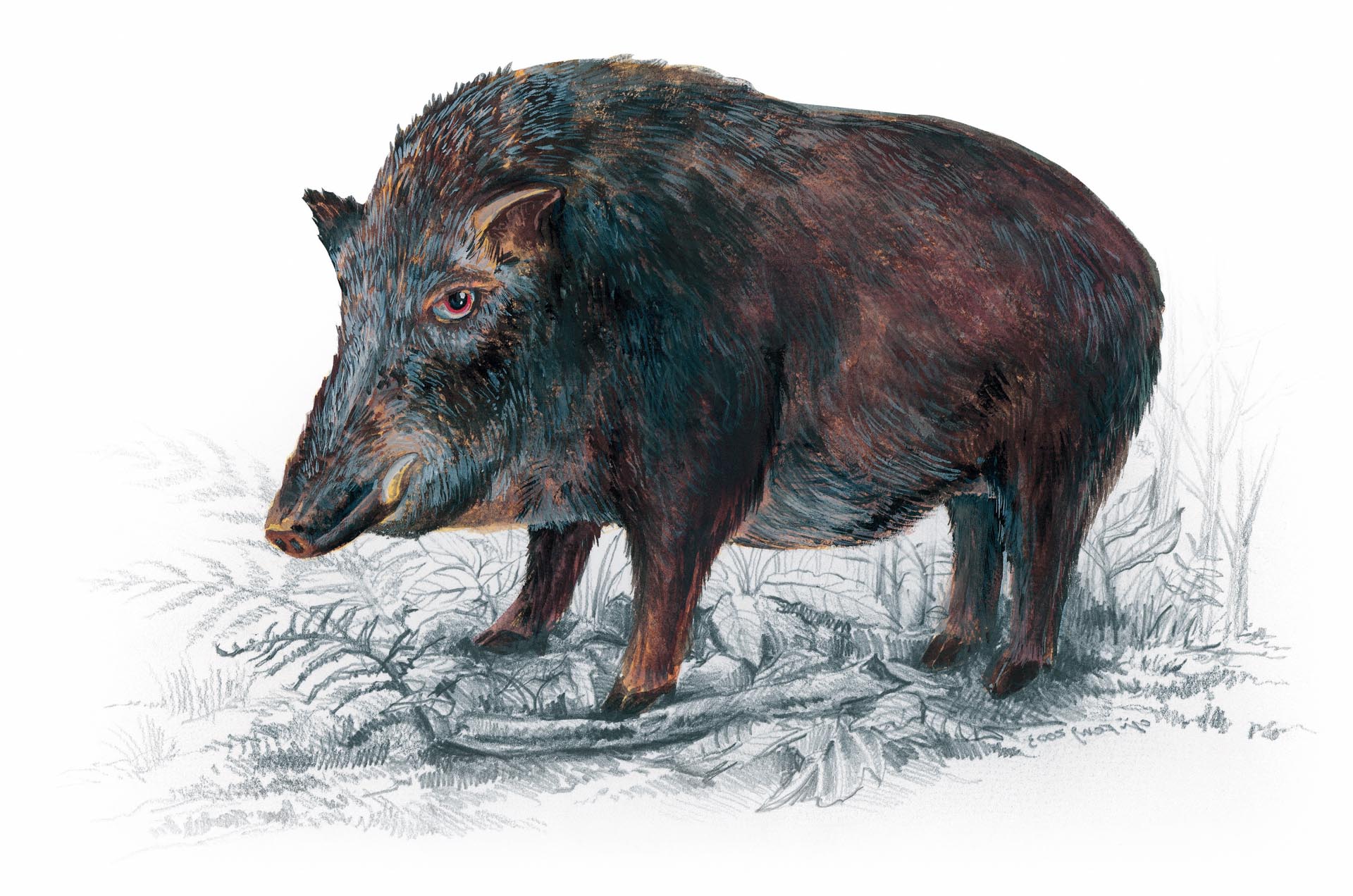 Taiwan Wild Boar ( Sus scrofa taivanus)
Taiwan Wild Boar ( Sus scrofa taivanus) Formosan Reeve's Muntjac ( Muntiacus reevesi micrurus)
Formosan Reeve's Muntjac ( Muntiacus reevesi micrurus)Moreover, Taiwan has been separated from the Eurasian Plat for so long that many of the species and subspecies inhabiting the island are endemic, unique to Taiwan.
26 of these endemic species live in Shei-Pa National Park, some of them very rare, for instance the Formosan Black Bear ( Selenarctos tibetanus formosanus), the Formosan Macaque ( Macaca cyclopsis), the Formosan Landlocked Salmon ( Oncorhynchus masou formosanus), the Mikado Pheasant ( Syrmaticus mikado), and the Swinhoe's Pheasant ( Lophura swinhoii).
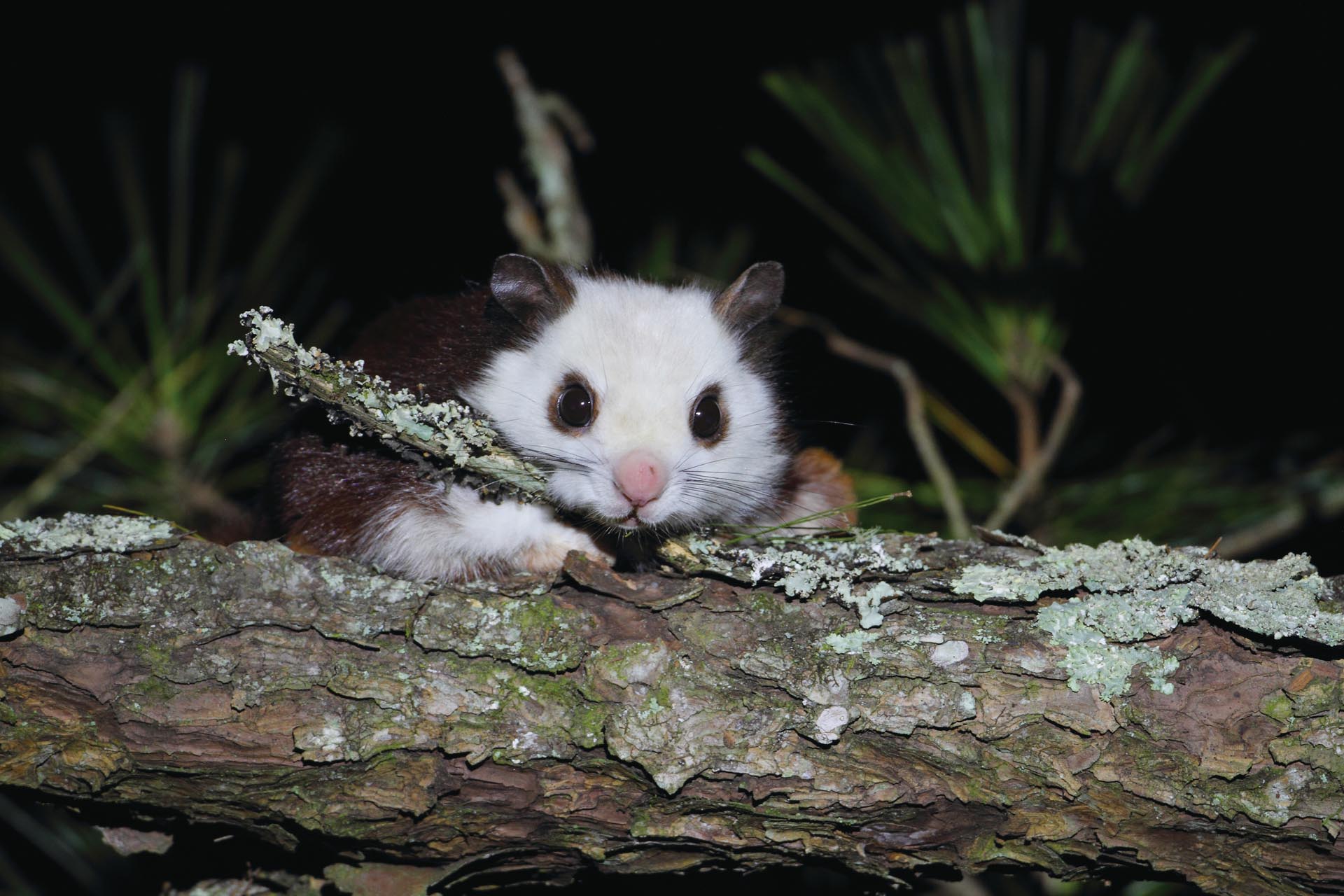 Formosan White-faced Flying Squirrel ( Petaurista alborufus lena).
Formosan White-faced Flying Squirrel ( Petaurista alborufus lena).* The Formosan Black Bear ( Selenarctos thibetanus formosanus) is Taiwan's largest mammal: its body is 120-150 cm long, and it may reach a weight of 200 kg. It was formerly much hunted, and with its environment disturbed by humans, it became very scarce, until it was found only in the higher mountain forests. Since it became a legally protected animal, its numbers have apparently increased, for there are more frequent records of mountain travelers having seen it or its traces, even at altitudes below 1,000 meters. It is black all over except for the large V of creamy white hair on its chest. It is practically omnivorous, strong but not fierce, and does not usually attack humans except in self defense or in the breeding season-note that the bear cubs are taken care of by their mother for several years before they can live independently.
 Formosan Rock-Monkey, endemic to Taiwan, is a protected species.
Formosan Rock-Monkey, endemic to Taiwan, is a protected species.
* There is only one kind of monkey in Taiwan, Formosan Rock-Monkey or Formosan Macaque ( Macaca cyclopsis). This is an endemic species, found in Taiwan only. Though it is a protected animal, it is not so scarce as the bear, and groups of macaques live in many forest areas around Taiwan, including the slopes of Shei-Pa National Park. A group of monkeys shows a high degree of social organization. Mostly they remain in trees, but sometimes they move about on the ground. Their diet consists of fruits, tender leaves, insects, and arthropods.
* One of the most interesting Taiwan's rare animal species is Formosan Landlocked Salmon ( Oncorhynchus masu formosanum), a relict from glacial times. Salmon species are basically marine migratory, that is: mating, egg-laying, hatching and the first stages of young fish life take place in cool rivers and lakes, then the fish drift down to the sea, where they live till they are mature, when they make their way back to their original inland home to reproduce. There are, however, in some places landlocked populations of salmon which, probably owing to geological and climatic changes after the last Ice Age, can no longer return to the ocean and have adapted to inland life. Surprisingly enough, there is a colony of landlocked salmon in subtropical Taiwan, in the cold upper reaches of the Dajia River, inside Shei-Pa National Park. Over-fishing and especially agricultural activity spoiling the natural environment of the fish led to a marked decline in their numbers. Until in 1990 it was estimated that only 300 were left, surviving in a few kilometers of the Cijiawan Creek of the upper Dajia River. The existence of these salmon is of great interest to scientists, and Shei-Pa National Park is carrying out a program of research and conservation which includes improving the habitat, breeding work, routine management and environmental education.
 Adult salmon
Adult salmon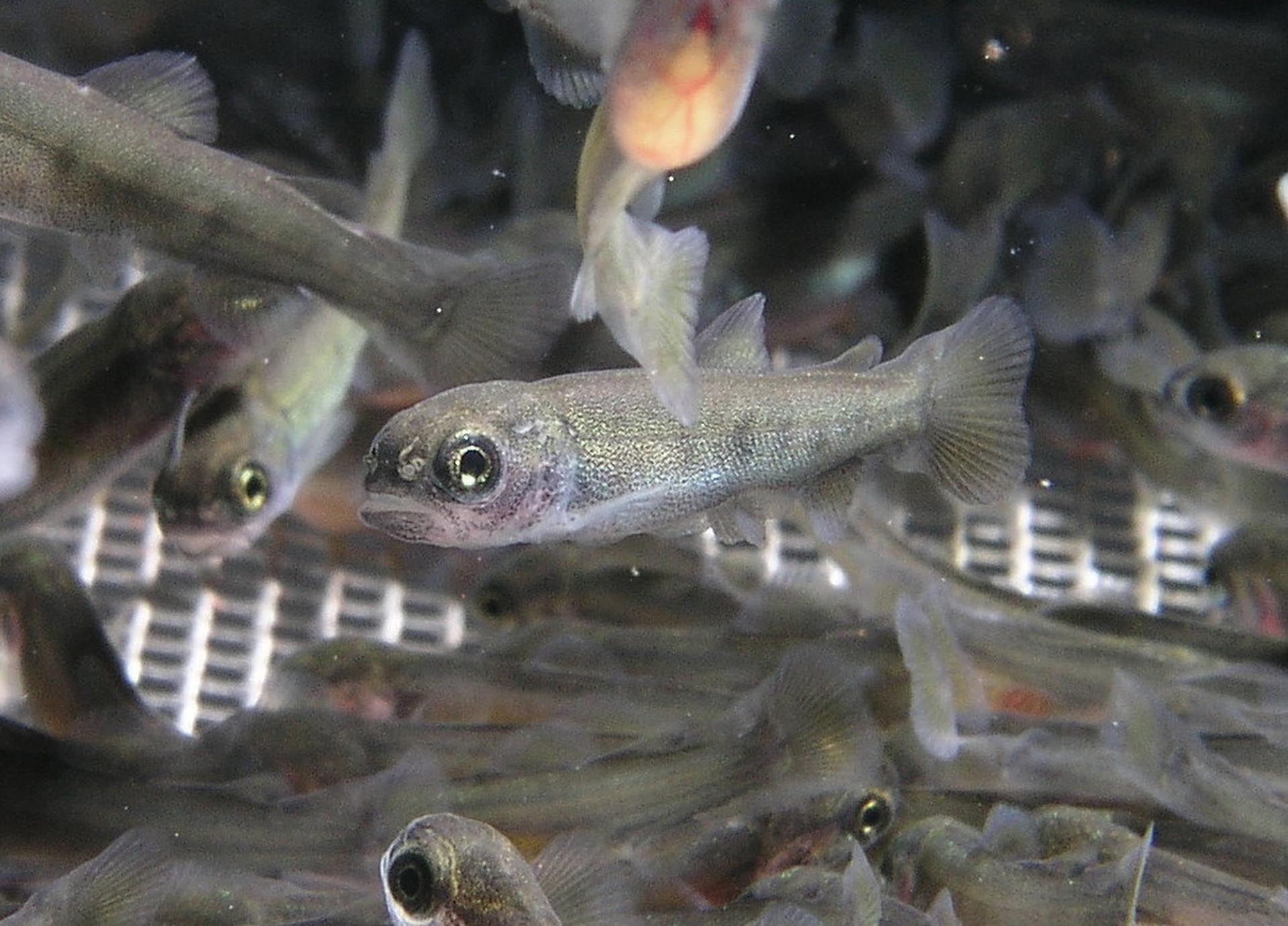 Parr
ParrAmong the 154 species of birds found in Shei-Pa National Park, the most interesting may be the Mikado Pheasant ( Syrmaticus mikado) and the Swinhoe's Pheasant ( Lophura swinhoii). Both are endemic to Taiwan, and both are timid birds, shy of humans and harassed by human activity; because of this and because they were much hunted, they became very scarce, and in 1994 both were placed in the IUCN Red List of Threatened Animals. It is thought that today there cannot be more than 40,000 Swinhoe's Pheasants and just a few thousand Mikado Pheasants.
 Taiwan Yuhina ( Yuhina brunneiceps)
Taiwan Yuhina ( Yuhina brunneiceps)* The Mikado Pheasant lives in the mountain forests between 1,800 meters and 3,200 meters high. It is a big bird: the male's body is about 97 cm long and the female's 55 cm. The male has blue-black shining feathers, with a white band across the wings, red skin round the eyes, and a splendid tail that may be up to 60 cm long, tail feathers dark in color with white cross bands. The female is olive-brown in color, with yellow speckles and a shorter, plainer tail. The male's magnificent tail feathers, quiet and dignified nature, and discreet guardian -like behavior all make it look like a real emperor of the forest. That is why its name mikado means the Japanese emperor.
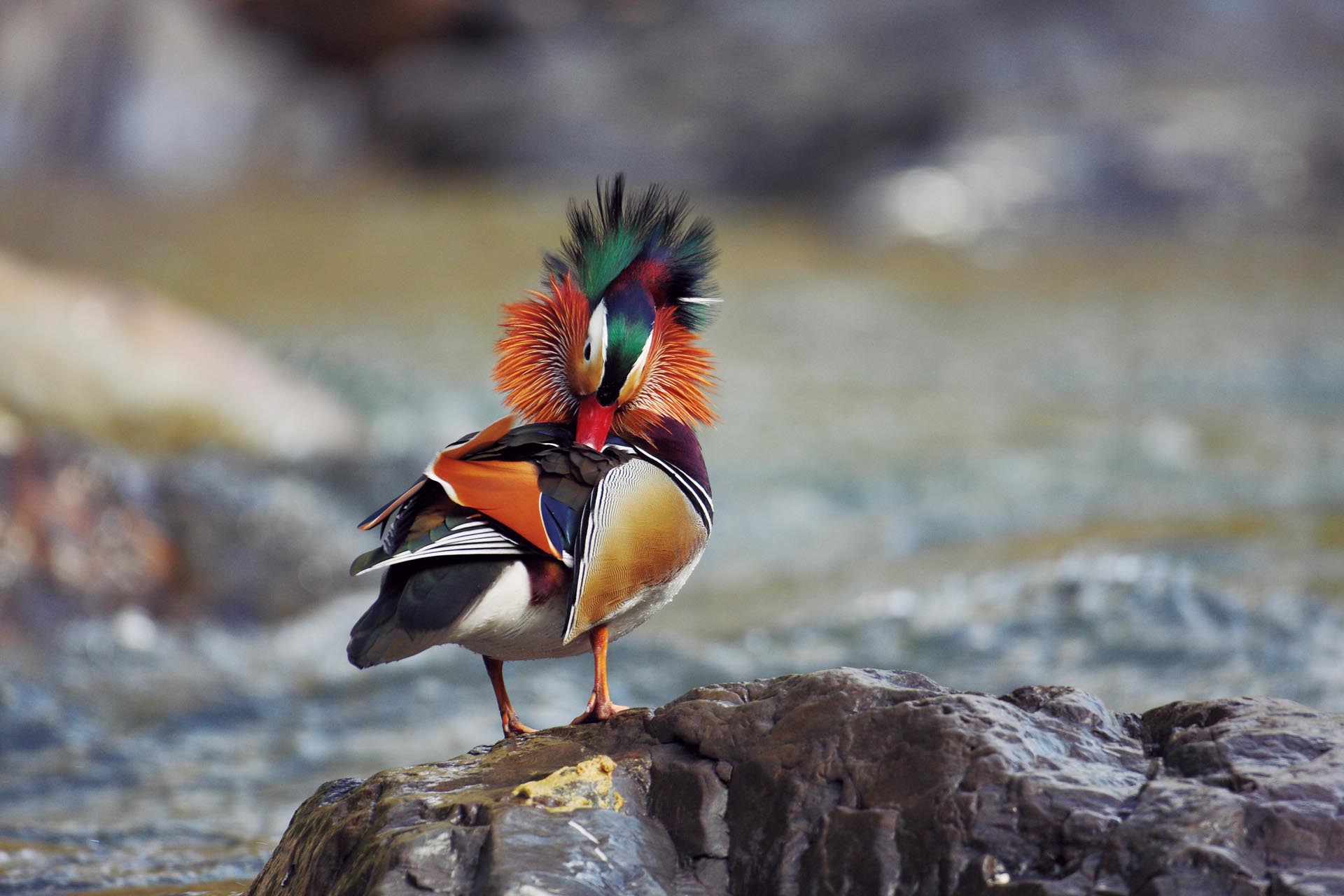 Mandarin Duck ( Aix galericulata)
Mandarin Duck ( Aix galericulata)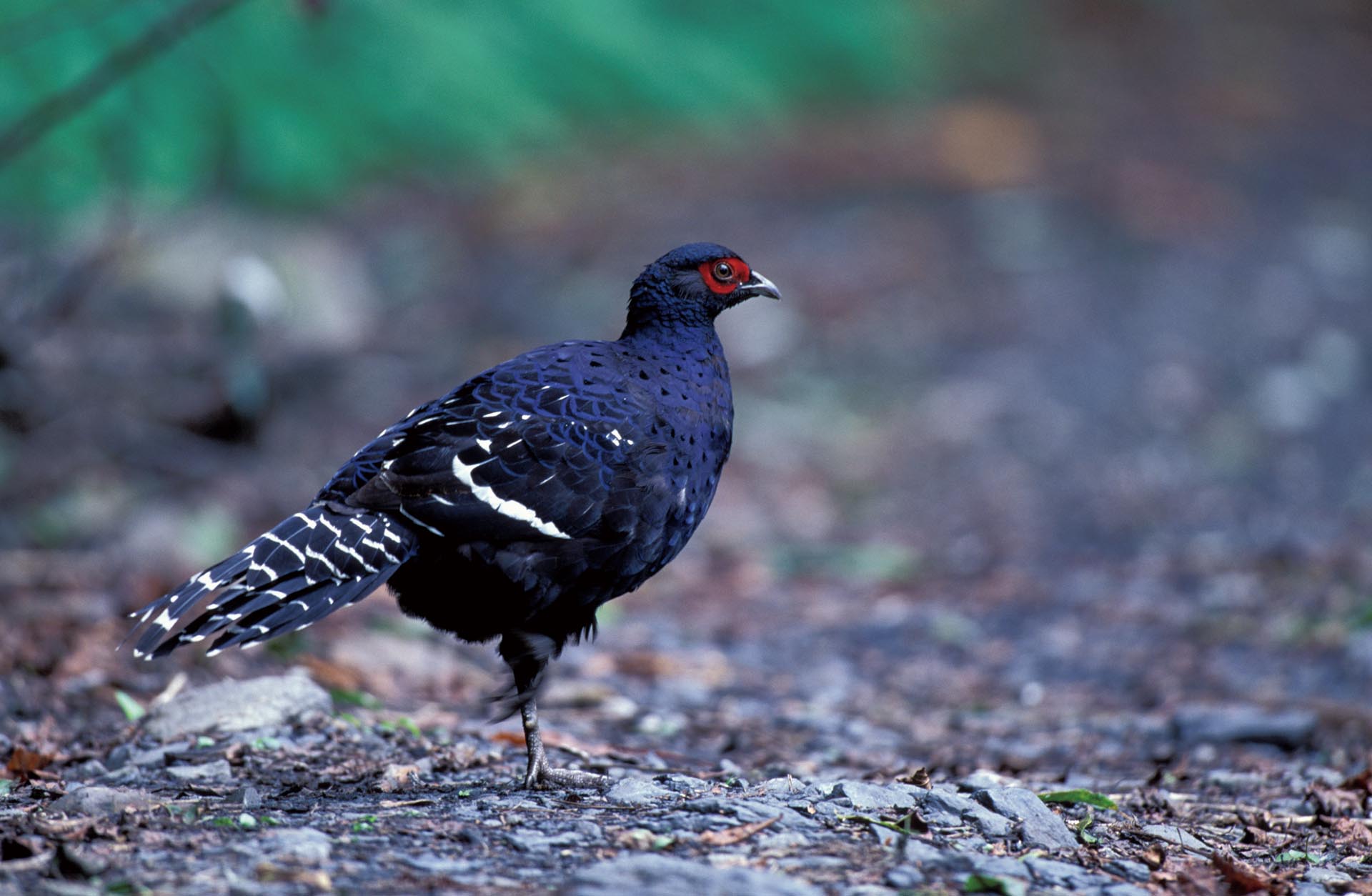 Mikado Pheasant ( Syrmaticus mikado)
Mikado Pheasant ( Syrmaticus mikado)* The Swinhoe's Pheasant is found at lower altitudes, up to 2,300 meters. It is a smaller bird. The male's body may be 79 cm long and that of the female 55 cm. The male's feathers are mostly a shining dark blue, but it has a white crown, a white stripe down its back and two white feathers in the center of its otherwise dark colored tail. The female is reddish brown. The male's tail is 34-42 cm long, the female's 20-25 cm. These pheasants are shy and nervous, difficult to study or photograph, but observers have noted the courtship dance of the male Swinhoe's Pheasant, and the lordly way he leads his family of 2-3 females around in the breeding season. Swinhoe was an English naturalist who caught one of these pheasants at Danshuei in 1862, admired its elegant beauty, and sent it back to England where, as recorded, it settled down well to its new life.